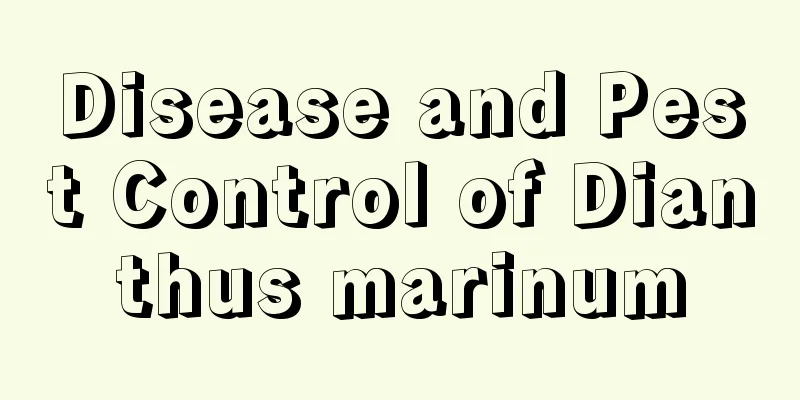Disease and Pest Control of Dianthus marinum

1. RustThis is a very common pathogen that basically appears on the leaves of plants and sometimes on the stems of plants, forming small raised blisters. Generally speaking, its spores are brown or purple-black powder, appearing on the body of the sea pink and forming small blisters. Although the sea dianthus itself will not die after the onset of this disease and will still be alive, it will not live well. Not only will it become thin and weak, but it will also not grow, so we still need to be vigilant. 1. Physical preventionMake sure the soil is loose to prevent water accumulation during planting. Pay attention to ventilation, clean the flower pots regularly, and apply fertilizer appropriately to prevent excessive nitrogen in the soil. If the planting area is relatively wide, you should be careful when choosing a site, and choose a relatively high place with good drainage. 2. Pathogen eliminationFor plants that are already sick, immediate response should be taken. The sick plants should be removed as soon as possible, gathered together, and burned and destroyed to prevent the pathogens from continuing to spread and harming other branches. 3. Chemical controlIn daily care, 63% of Mancozeb should be selected and prepared into a 600-fold solution for prevention and treatment. If the disease has already occurred, there are three types of pesticides that can be chosen to treat the plants, namely, fenadone, sodium carboxin and carboxin-ethyl, respectively. 2. Red spiderThis is a common pest that often harms various types of plants. During the winter, they will lay eggs to ensure the survival of their offspring. After a winter, the eggs will begin to hatch in March. The incubation time varies, and it will generally not be fully hatched until April, causing harm. 1. Prevention and treatmentFor red spider mites, you can use pesticides to eliminate them. In serious cases, you can use some special drugs to prepare a spray, or use cypermethrin emulsifiable concentrate for prevention and control. In addition, the use of mite-killing agent and cypermethrin emulsifiable concentrate can also achieve good prevention and control effects. In order to better prevent and control, new lipid membranes can be added to pesticides to enhance their effectiveness. |
<<: Disease and insect pest control of blood orchid
>>: Disease and insect pest control of sheep alopecia
Recommend
The reason why the stem of the money tree shriveled, can the stem wrinkles be restored?
1. Too much watering The money tree is very droug...
Lettuce planting time and method
1. Planting time Lettuce should be planted at the...
What fertilizer is best for lilac?
Lilac fertilization time When planting lilac, if ...
What is the meaning of golden branches and jade leaves?
Meaning The meaning of golden branches and jade l...
Is it profitable to grow black fungus? How to make a profit?
Is growing black fungus profitable? Black fungus ...
Flower language of baby's breath
1. Flower Language The flowering period of baby&#...
How to grow jade pendant succulents to be fat, plump and long
Jade Pendant Succulent Growth Conditions 1. Soil:...
Christmas Rose Cultivation Methods and Precautions
1. Maintenance methods 1. Soil: Christmas rose is...
Can strawberries be grown in sand?
Can strawberries be grown in sand? Strawberries c...
What fertilizers can make grapes bloom and bear more fruits (a list of fertilizers for grape seedlings throughout the year)
There are many factors involved in making the bra...
Can the green treasure grow again after losing its leaves?
1. Can it still grow? It is normal for Green Trea...
The efficacy and function of lemongrass
The efficacy and function of lemongrass Medicinal...
How to take care of the newly bought fairy finger
1. Soil After buying the fairy finger home, you s...
What kind of potting soil should be used for Begonia
Selection of Begonia flower pots When growing cra...
How to grow forget-me-not flowers
Forget-me-not growing conditions Forget-me-nots h...









